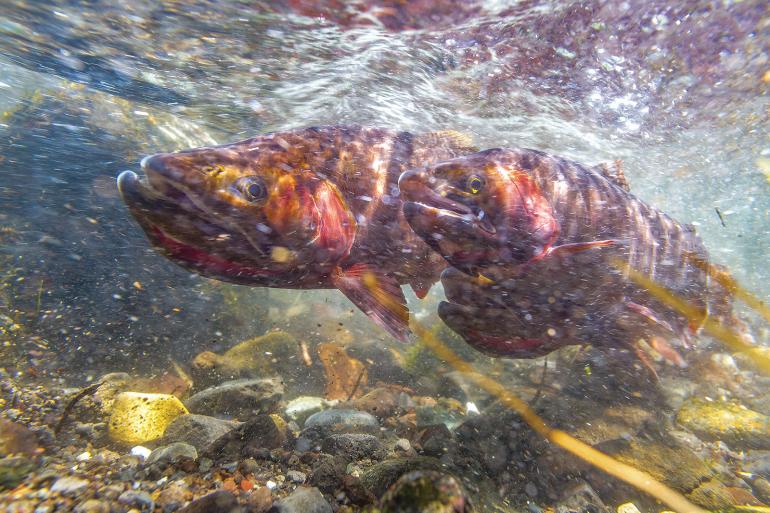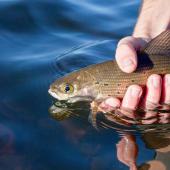Flooded Fisheries
How fish respond to high water.
If you’re a trout living in the Northern Rockies, you probably love mountains loaded with snow. Bottomless snowpack and wet spring weather typically result in raging rivers come June, and these high-water events create and maintain the habitats that support trout and their food. However, as I remind my kids each Halloween, it’s possible to have too much of a good thing.
Most fish can navigate normal spring runoff, which typically occurs over several months. The water recedes slowly, and trout have plenty of time to migrate back to the main river channel on the falling hydrograph. Runoff is actually critical for some species, like rainbow trout and native cutthroat, that use high spring flows as a cue to spawn. However, the flooding we saw on the Yellowstone River and its tributaries in 2022 was far from normal runoff.
Runoff is actually critical for some species, like rainbow trout and native cutthroat, that use high spring flows as a cue to spawn. However, the flooding we saw on the Yellowstone River and its tributaries in 2022 was far from normal runoff.
Many estimates characterized the flooding on the Yellowstone, Stillwater, and other streams along the Beartooth front as a 500-year event. Rain-on-snow events like these produce quickly changing conditions—days, as opposed to months—that can isolate fish in floodplains as the water recedes. Although it’s difficult to quantify the number of fish that were stranded, they were likely only a small percentage of the overall population.
The greatest effects will probably be seen in the cohort of juvenile trout produced last year. High water velocities displaced fry that had already hatched, but didn’t possess much in the way of swimming ability. The flooding also scoured spawning redds containing rainbow and cutthroat eggs. The effect of this scouring will be especially pronounced in colder tributary creeks where spawning and egg-development are delayed.
Regardless, most trout populations in southwest Montana fluctuate under normal conditions and rebound, even from exceptionally low numbers, within several years. A single female trout produces thousands of eggs, which helps expedite recovery. Moreover, the bugs that trout feed on often thrive in the years following flood events because of the increased nutrient load in the stream. Silt and sand are also washed from the spaces between rocks where aquatic insects live, further improving habitat.
The physical scars of the flooding will last for several generations. However, our rivers are incredibly resilient, and the long-term effects of last year’s event will ultimately enhance instream and riparian habitats (e.g., log jams and cottonwood recruitment) resulting in improved fisheries. Although your favorite fishing hole might look a bit different in 2023, or might not exist at all, the new channels and revitalized habitats will likely result in better angling opportunities in the near future.
Montana Fish, Wildlife & Parks regularly samples the Yellowstone River and many of its major tributaries, so feel free to reach out to your local biologist in the coming years to see sampling results and learn how the 2022 flood might have affected your local fisheries.
Mike Duncan is a fisheries biologist with Montana Fish, Wildlife & Parks.













